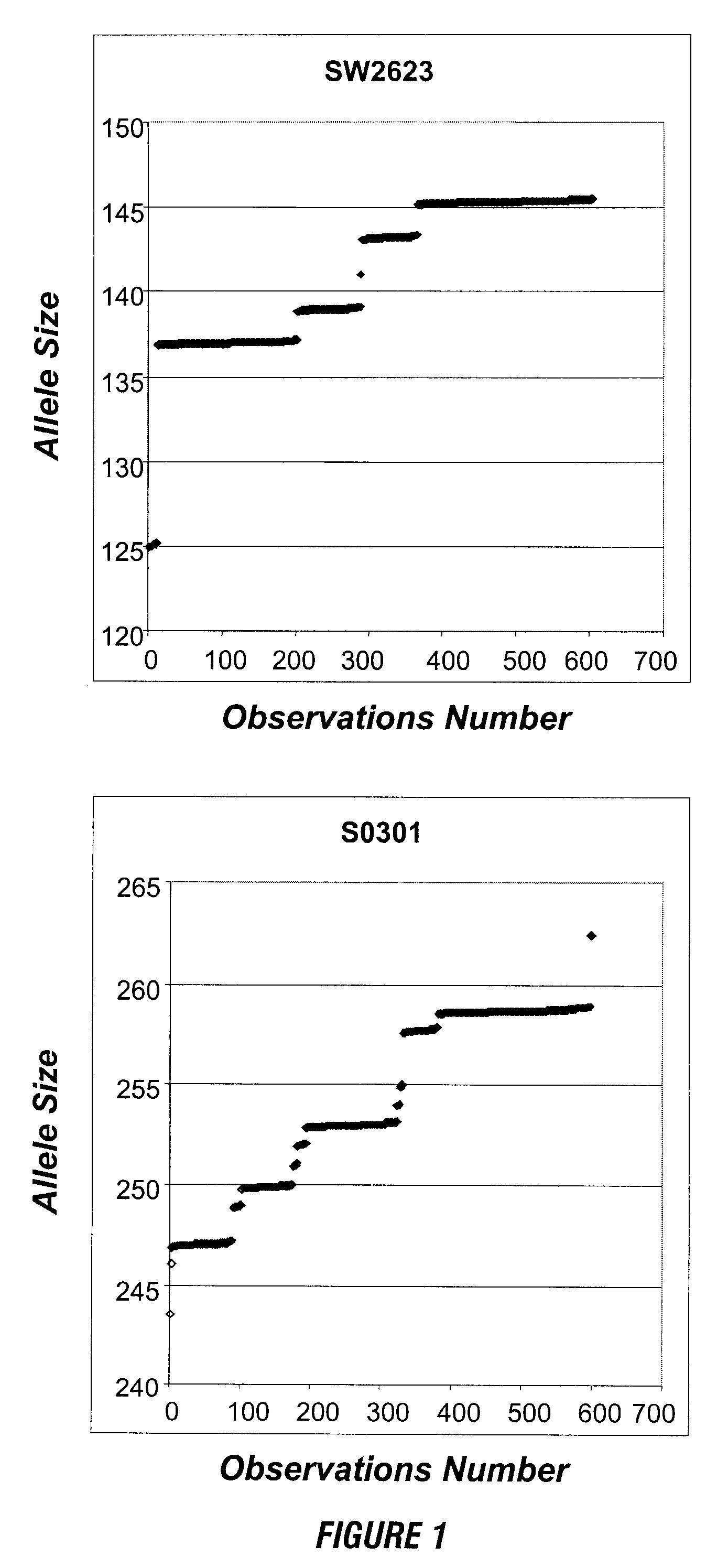System for tracing animal products
a technology of animal products and tracer, which is applied in the field of gene testing systems, can solve the problems of paper loss, label degradation on storage, recording errors, etc., and achieve the effects of cost-effective identity preservation, cost-effective implementation, and ease of us
- Summary
- Abstract
- Description
- Claims
- Application Information
AI Technical Summary
Benefits of technology
Problems solved by technology
Method used
Image
Examples
examples
Introduction
[0039]A pilot project for a traceability scheme was designed around two sow units (SU1 and SU2) that both utilize semen from a common boar stud (BS1). The BS1 boar stud houses approximately 25 PIC line 337 sires. SU1 and SU2 are both 600 sow units (farrowing 25 litters / wk) that utilize PIC C22 parent females. Both farms maintain good on-farm production records.
[0040]Tissue samples were also taken from unrelated PIC337×C22 slaughter pigs originating from an unrelated production system (System II). These samples were utilized as a negative control against pigs originating from the system described above.
[0041]DNA markers are proposed as a means to identifying parentage of individual animals. In addition, parentage analysis by DNA markers was to be evaluated as a system of identifying the source of carcasses and individual cuts of meat to a specific farm.
PUM
| Property | Measurement | Unit |
|---|---|---|
| size | aaaaa | aaaaa |
| length | aaaaa | aaaaa |
| transparent | aaaaa | aaaaa |
Abstract
Description
Claims
Application Information
 Login to View More
Login to View More - R&D
- Intellectual Property
- Life Sciences
- Materials
- Tech Scout
- Unparalleled Data Quality
- Higher Quality Content
- 60% Fewer Hallucinations
Browse by: Latest US Patents, China's latest patents, Technical Efficacy Thesaurus, Application Domain, Technology Topic, Popular Technical Reports.
© 2025 PatSnap. All rights reserved.Legal|Privacy policy|Modern Slavery Act Transparency Statement|Sitemap|About US| Contact US: help@patsnap.com



